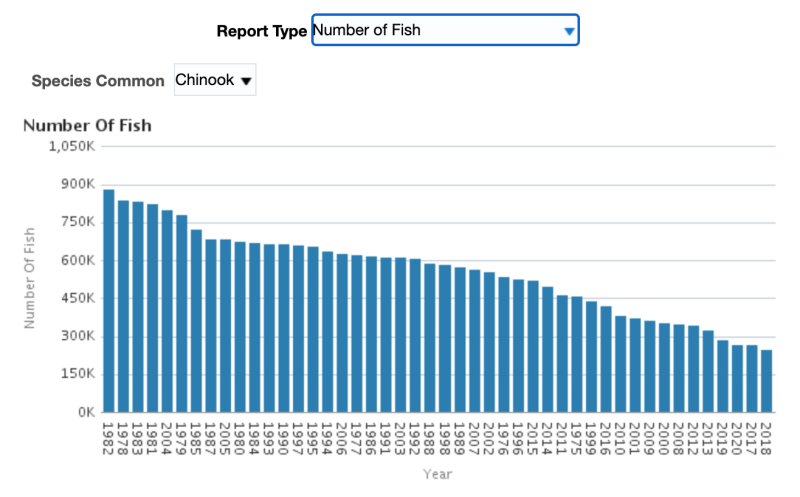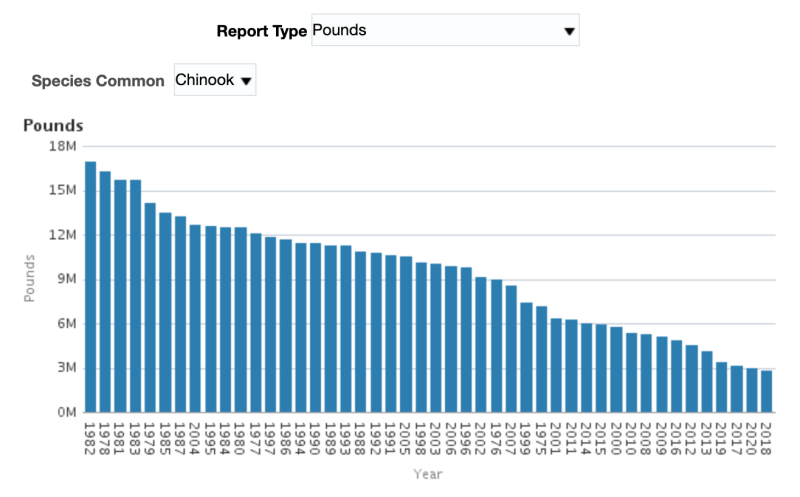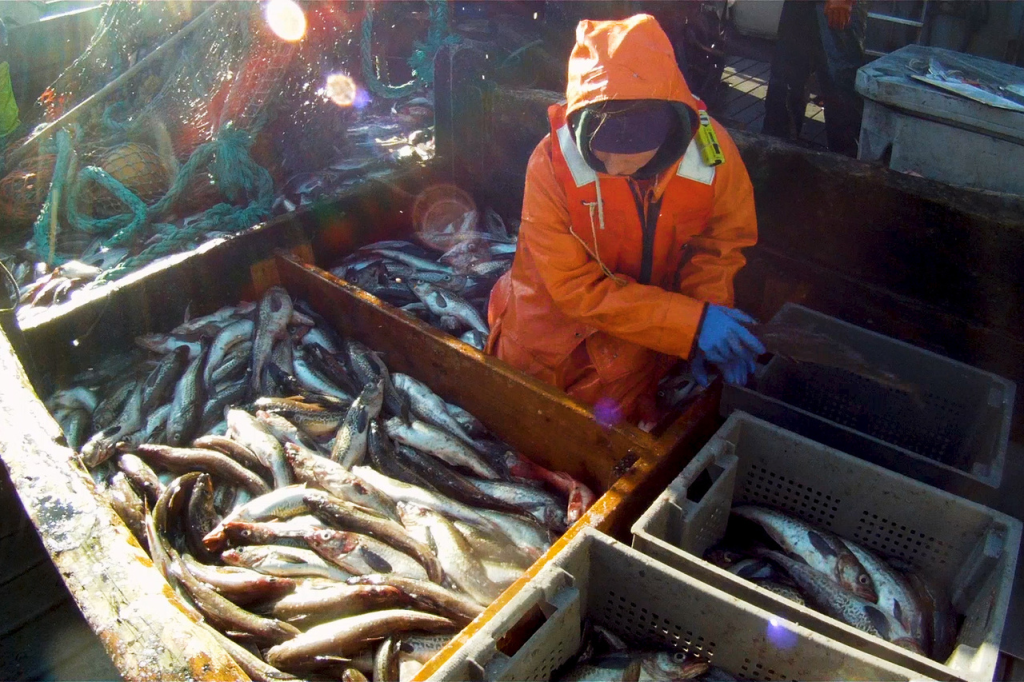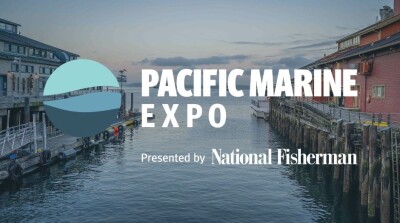Animosity toward Alaska’s trawl fleet reached a fever pitch over the summer. In most parts of the state, where salmon fishing would have kept stakeholders busy, lackluster returns and some closures instead gave thousands of fishermen more time to mull over answers to where the fish may have gone.
Although Alaska’s overall salmon returns have been strong this year, the results are stratified. King salmon returns, specifically, have been in a long and steady decline. Statewide, king landings — by number of fish — have declined by more than 70 percent in the last 40 years, from a high of 875,630 fish in 1982 to 265,081 in 2020. The harvest so far for 2021 is about 212,000 fish.

When accounting for landings by weight, the reduction is almost 85 percent over the same period, from 16.9 million pounds in 1982 to 2.9 million in 2020, according to the Alaska Department of Fish & Game.

As council meetings went virtual during the pandemic-induced shutdowns, participation and feedback from local stakeholders increased significantly.
Heading into the October meeting (which opened with a one-day session Oct. 6 and continues Oct. 10-15), two letters from Bering Sea crab as well as coastal salmon and halibut stakeholders urged Alaska’s governor and the council to improve management of bycatch for the sake of non-trawl fisheries.
“Trawlers are allowed to fish as though all of the populations of fish they discard as bycatch are in good health, while the rest of Alaska’s user groups are making the sacrifice of significantly reduced access or complete closures in order to ensure the long-term sustainability of those same stocks. It’s a bad deal for Alaskans,” said Sommers Cole, a gillnetter in Southeast Alaska and manager of the Alaska Salmon Habitat Information Program.
The disparities create a quandary for fishery managers. Bycatch among the trawl fleet is determined by the federal North Pacific Fishery Management Council under NMFS. However, management of salmon fisheries and escapement falls to the state. The divide deepens along ownership lines, as well. Many coastal Alaska fishermen see the trawl fleet as representatives of corporate Seattle ownership of state resources in federal waters, especially the pollock fleet.
“It’s time to manage these ecosystems for more than just a single species — pollock — which has been the status quo,” said Alexus Kwachka, who fishes out of Kodiak and Bristol Bay and has served on the Advisory Panel for the North Pacific council. “Our goal here should be getting the gulf and Bering Sea back to their former levels of health and abundance. If trollers, gillnetters, seiners, sportfishers and tribal citizens throughout Alaska are being forced to go without fishing while trawlers keep their nets in the water, we have a serious management problem, and it is beyond time to right that ship.”
The disparity between federal and coastal fisheries was highlighted by the council’s action to approve the transfer of king salmon bycatch from one Gulf of Alaska trawl fleet to another this summer.
“Alaskans are making huge sacrifices to protect Chinook; the federal government via the NPFMC needs to do the same,” says the letter via the Alaska Salmon Habitat Information Program with almost 300 individual signatures. “Chinook bycatch being rolled over to another trawl sector to kill and discard is unconscionable when many Alaskans are foregoing subsistence, sport and commercial harvest. During this time of crisis, minimizing Chinook bycatch must take priority over optimizing trawl harvest.”
Bycatch of king salmon and halibut in the trawl fleet is not a new topic in coastal Alaska or as a contentious council topic.
“Halibut has been declining since 2011,” according to an industry community consultant. “The proportion that has been taken as bycatch compared with what is taken as a directed fishery has gone up.”
Efforts to protect the halibut biomass are an uphill battle, advocates say.
“The last time to we tried to reduce halibut bycatch, it took about five years — from about 2010 to 2015,” the consultant says.“In the Amendment 80 fleet, it was reduced by 25 percent. We had asked for a 50 percent reduction. The council said at that time that this was just the beginning, that they wanted to continue to reduce bycatch. We started in 2016.”
Efforts are ongoing for more halibut protections now five years later. Meanwhile, trawl bycatch and species interaction are also bubbling up for the state’s king and snow crab fisheries.
In September, the Alaska Bering Sea Crabbers put out a statement responding to the closure of the Bristol Bay red king crab season — a first in 25 years — and a dwindling biomass for other crab populations.
“We’ll be looking to the council and NOAA Fisheries to conserve important crab habitat and spawning grounds as highlighted by crab scientists over 10 years ago, to create meaningful incentives to reduce crab bycatch in other fishing sectors, to reduce fishing impacts on molting and mating crab, and to estimate unaccounted for bycatch from unobserved fishing mortality from bottom and pelagic trawl nets, as well as pot and longline gears,” the statement said. “We’ll be looking to other sectors in the fishing industry to improve their hotspot reporting, alerting other fishermen on areas of crab to avoid, and to improve handling practices to reduce crab mortality by limiting the amount of time crab are on deck and by gently returning them to the water.”
Though the trawl fleet has made wide-ranging efforts to reduce bycatch through gear modification and fleet collaboration, habitat protection and bycatch reduction continue to be the rallying cry behind the movement to change the way bycatch is managed at the federal level.
“Right now, the council is optimizing trawl harvest at the expense of Alaska’s fish and fisheries. That needs to change,” says Linda Behnken, a Sitka-based fisherman, executive director of the Alaska Longline Fishermen's Association, and an NF Highliner. “We need to protect fish habitat, reduce bycatch, and prioritize Alaska’s historic fisheries before it is too late.”







